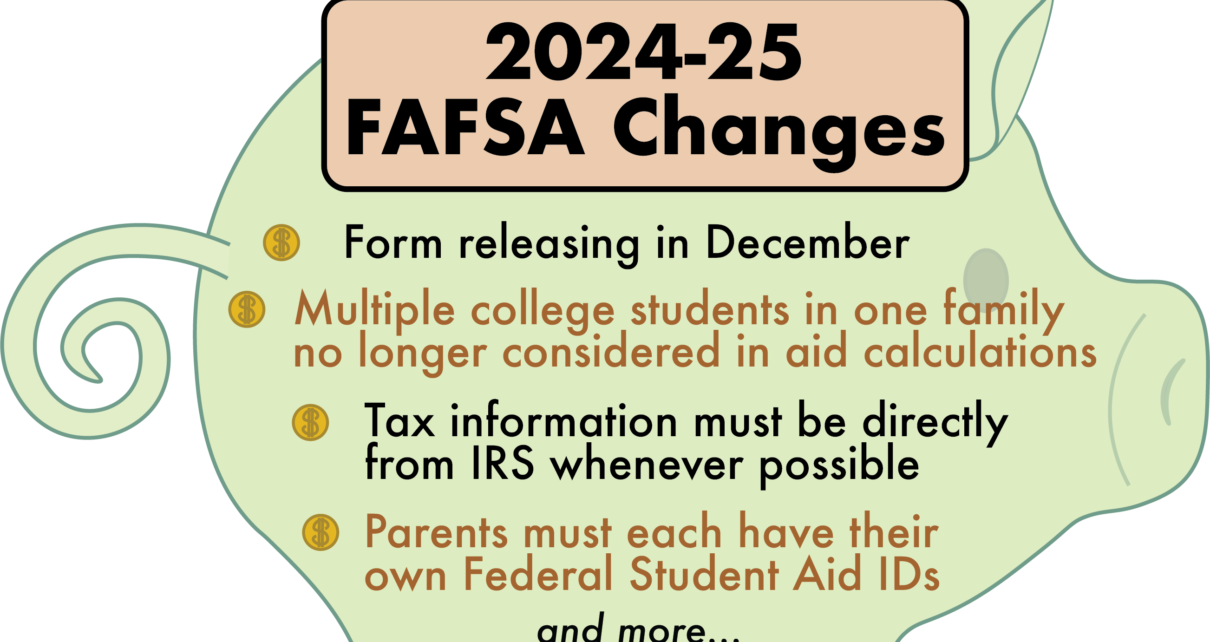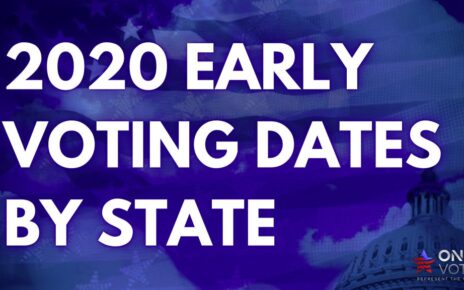- Adriana Morga
A new version of the federal student aid application known as the FAFSA is now available to all college applicants for the 2024-2025 school year.
The new Free Application for Federal Student Aid was designed to make it easier for students and parents to apply and to make more of them eligible for funding.
Students can usually fill out the FAFSA starting in October, but the 2024-2025 version only became available last week because the Department of Education was still working on the new form.
Students and families experienced limited availability and glitches during a soft launch last week.
As of Monday, over a million students had successfully submitted applications, according to the Department of Education. Every year, more than 17 million students fill out the FAFSA.
The relaunch brings major changes such as fewer questions, the ability to list more colleges and availability in more languages. However, the update means students will get their financial aid offers later than usual.
Here’s what you need to know:
HOW DOES THE FAFSA WORK?
The FAFSA is a free government application that uses financial information from you and your family to determine whether you can get financial aid from the federal government to pay for college.
The FAFSA will send your financial information to the schools you say you are interested in attending. It previously only allowed you to send your information to 10 schools, but the new application allows you to send your application to up to 20. Each school that admits you will send you a financial aid package. The amount of financial aid you get depends on each institution.
The application is also used to determine eligibility for other federal student aid programs, like work-study and loans, as well as state and school aid. Sometimes, private, merit-based scholarships also require FAFSA information to determine if you qualify.
WHEN WILL THE 2024-2025 FAFSA BE AVAILABLE?
Starting Tuesday, the Department of Education said the FAFSA will be available to everyone 24 hours a day.
WHO SHOULD FILL OUT THE FAFSA?
Anyone planning to attend college next year. Both first-time college students and returning students can apply for the FAFSA. Many decide not to apply thinking their family’s income is too high to be considered, but all students are advised to fill out the application.
Students and parents can use the federal student aid estimator to get an early approximation of their financial package.
WHAT ARE THE KEY CHANGES FOR THE NEW FAFSA?
In general, the relaunch of the application is meant to make the process smoother for students and their families. The Education Department also said the relaunch will increase eligibility for financial aid for low- and middle-income students.
“Most students and families will be able to complete the process in less time and we’ll see more students qualify for need-based aid,” said Justin Draeger, president of the National Association of Student Financial Aid Administrators.
Here are the key changes:
-
- — FSA IDsStarting this year, everyone who needs to provide information for the FAFSA must create an FSA ID.
-
A new version of the federal student aid application known as the FAFSA is now available to all college applicants for the 2024-2025 school year.
The new Free Application for Federal Student Aid was designed to make it easier for students and parents to apply and to make more of them eligible for funding.
Students can usually fill out the FAFSA starting in October, but the 2024-2025 version only became available last week because the Department of Education was still working on the new form.
Students and families experienced limited availability and glitches during a soft launch last week.
As of Monday, over a million students had successfully submitted applications, according to the Department of Education. Every year, more than 17 million students fill out the FAFSA.
The relaunch brings major changes such as fewer questions, the ability to list more colleges and availability in more languages. However, the update means students will get their financial aid offers later than usual.
Here’s what you need to know:
HOW DOES THE FAFSA WORK?
The FAFSA is a free government application that uses financial information from you and your family to determine whether you can get financial aid from the federal government to pay for college.
The FAFSA will send your financial information to the schools you say you are interested in attending. It previously only allowed you to send your information to 10 schools, but the new application allows you to send your application to up to 20. Each school that admits you will send you a financial aid package. The amount of financial aid you get depends on each institution.
The application is also used to determine eligibility for other federal student aid programs, like work-study and loans, as well as state and school aid. Sometimes, private, merit-based scholarships also require FAFSA information to determine if you qualify.
WHEN WILL THE 2024-2025 FAFSA BE AVAILABLE?
Starting Tuesday, the Department of Education said the FAFSA will be available to everyone 24 hours a day.
WHO SHOULD FILL OUT THE FAFSA?
Anyone planning to attend college next year. Both first-time college students and returning students can apply for the FAFSA. Many decide not to apply thinking their family’s income is too high to be considered, but all students are advised to fill out the application.
Students and parents can use the federal student aid estimator to get an early approximation of their financial package.
WHAT ARE THE KEY CHANGES FOR THE NEW FAFSA?
In general, the relaunch of the application is meant to make the process smoother for students and their families. The Education Department also said the relaunch will increase eligibility for financial aid for low- and middle-income students.
“Most students and families will be able to complete the process in less time and we’ll see more students qualify for need-based aid,” said Justin Draeger, president of the National Association of Student Financial Aid Administrators.
Here are the key changes:
— FSA IDs
Starting this year, everyone who needs to provide information for the FAFSA must create an FSA ID.
In previous years, only the student and one parent needed to have an FSA ID. For the 2024-2025 form, anyone who needs to provide information, such as the student’s spouse, biological or adoptive parent, or the parent’s spouse, must have an individual FSA ID.
To create an FSA ID, contributors need their Social Security number and email address.
— Student Aid Index
The new FAFSA will replace the Expected Family Contribution with a different formula called the Student Aid Index that will help determine the amount that each student can receive in financial aid.
Both formulas consider the income and assets of the student and their parents and include both taxed and untaxed income. But unlike the old formula, the new one won’t benefit families with multiple students in college. The new formula will allow students from families that are not required to file federal income taxes to automatically be considered for a high financial aid amount.
— IRS Data Retrieval Tool
The updated FAFSA will include fewer questions, which will make the application quicker to fill out. However, all contributors must give their consent for their IRS information to be directly imported into the FAFSA.
In previous years, it was optional to use the IRS Data Retrieval Tool. Now, if a contributor doesn’t consent to having their information imported, the student will not be eligible for financial aid.
— More languages available
The FAFSA will be available in the 11 most common languages. Previously it was only available in English and Spanish.
— More eligibility for Federal Pell Grants
In the 2024-2025 award year, more students will be eligible to receive a federal Pell Grant. According to the Education Department, an estimated 610,000 new students will be eligible for a grant. It will also allow 1.5 million more students to receive the maximum Pell Grant award, which will bring the number of students who are eligible for the maximum award to over 5.2 million. The maximum federal Pell Grant award available last year was $7,395.
DOES THE FAFSA TAKE INFLATION INTO ACCOUNT?
As part of the relaunch, the Education Department was supposed to include the most recent inflation data in the Student Aid Index. However, the department didn’t update the inflation level for the new FAFSA. The application kept the inflation level from April of 2020 rather than April of 2023, the Washington Post first reported. This omission can make some students qualify for a smaller financial aid award.
The Education Department hasn’t said if they will update the numbers for the 2024-2025 FAFSA. But, if they did, this could mean more delays for students, McCarthy said. Because of the relaunch, students will get their financial award offers later than usual already and if the Education Department chooses to fix the inflation numbers, it could mean further delays.
“If they do not make those updates, then you have students losing out potentially on some dollars,” said Karen McCarthy, NASFAA’s vice president of public policy and federal relations. “But the aid offers could conceivably be sent out from institutions a little bit earlier. So students would get the aid offers earlier, and would have more time to make enrollment decisions. So there’s definitely a trade-off at play here,” McCarthy said.
WHEN CAN I EXPECT TO KNOW MY FINANCIAL AID AWARD?
Since the process has been delayed this year, students will begin to receive their offers later than usual. If a student fills out the application as soon as it’s available, their listed colleges won’t receive their information until potentially the end of January, Draeger said.
“There will be a bit of a gap and potentially delay so we ask for a little bit of patience,” Draeger said.
In previous years, colleges would get information about students shortly after they started submitting the FAFSA in October. That meant students would receive their financial aid awards along with their acceptance letters in January.
Draeger recommends that students regularly check their desired college’s website for new relevant deadlines.







